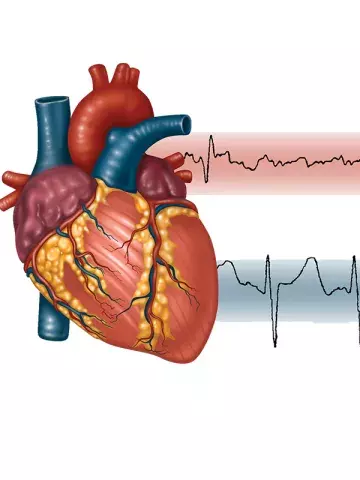High mortality rate reported within 10 years of atrial fibrillation hospitalisation
By Rebecca Jenkins
Almost half of patients hospitalised for atrial fibrillation (AF) or flutter die within 10 years of discharge, an analysis of Australian and New Zealand data has found.
AF and flutter were common causes of hospitalisations, but long-term outcomes were poorly understood, University of Queensland researchers wrote in the European Heart Journal.
To address this data gap, the researchers collated information on all patients hospitalised acutely with a primary diagnosis of AF or flutter from 2008 to 2017 from all public and most private hospitals in Australia and New Zealand.
Overall, 260,492 adults (mean age 70.5 years and 49.6% female) were followed up for 1,068,009 person-years, during which 69,167 of the cohort died.
Researchers found patients had a low survival of 55.2% at 10 years’ postdischarge, with an attributable loss of life expectancy of 2.6 years attributable to AF or flutter.
AF-associated cardiovascular outcomes were relatively common, they noted, together with rehospitalisations for recurrent AF or flutter. At one year, 21.3% of people had been rehospitalised for AF or flutter, rising to 35.3% by five years and 41.2% by 10 years.
‘Despite the high burden of AF or flutter rehospitalizations, the incidence of AF ablation was low with less than 7% of patients receiving this procedure at 10 years’ post-discharge,’ the researchers wrote.
First author Dr Linh Ngo, a researcher at the Faculty of Medicine, University of Queensland, told Medicine Today the high mortality data were surprising, especially the loss in life expectancy attributable to AF.
‘These are older patients who are hospitalised, and they often have multiple comorbidities, making it challenging to estimate the impact on survival due to AF,’ she said.
‘Nevertheless, compared with the general population, we found these patients lost 2.6 years of their expected life expectancy, which was attributable to AF and separate from other coexisting conditions, suggesting a significant burden on long-term survival.’
Dr Ngo said this finding, together with the high rate of AF and flutter rehospitalisation, pointed to the need to change the narrative around AF to focus on prevention and aggressive risk factor reduction.
‘After a heart attack, stroke or heart failure, an enormous amount of effort goes into risk factor reduction,’ she said.
‘In patients with AF, we usually mostly focus on discussing anticoagulation for stroke prevention.’
Senior author Associate Professor Isuru Ranasinghe, Associate Professor in Cardiology at the University of Queensland, added that the study suggested catheter ablation was potentially being underused, despite the intervention being the most effective treatment for patients with symptomatic AF.
‘Catheter ablation for AF is a complex, time-consuming and expensive procedure, and we think that the high cost and long waiting time in the public system are the potential barriers to the more widespread utilisation of this effective treatment for AF,’ he told Medicine Today.
Eur Heart J 2024: 00; 1-9; https://doi.org/10.1093/eurheartj/ehae204.


